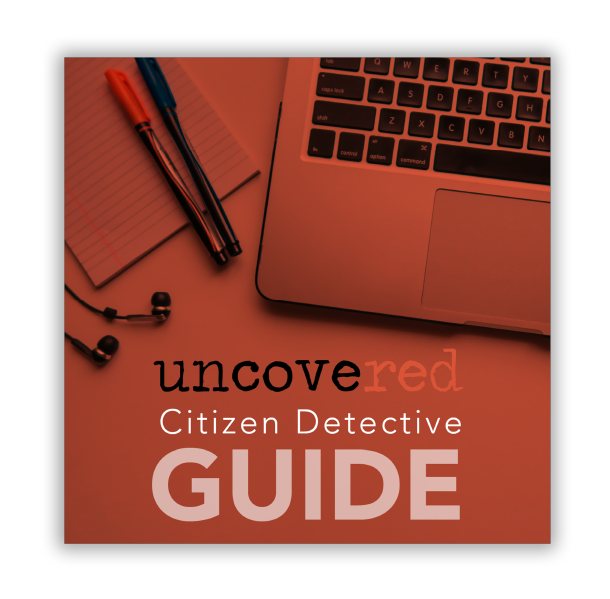In 2019, following the deaths of 16,425 people in the United States, loved ones of the victims likely heard some version of the phrase “the death was ruled a homicide.”
Those victims included Hubert Heatherly of Houston, a 79-year-old Navy veteran who initially was thought to have been injured in a fall; forensics later determined his death was a homicide due to blunt force trauma to the head.

In many other cases, foul play was more evident, including in the deaths of Carnell Sledge, 40, and Katherine Brown, 33, who were mysteriously shot in the middle of the day at a park in Rocky River, Ohio, and Nicole Montalvo, a 33-year-old Florida mother whose dismembered remains were found buried on property owned by her estranged husband and father-in-law.
Suddenly losing a loved one is always devastating. But when the death is ruled suspicious, or law enforcement officers have enough information on the scene to suspect that the death is a homicide, families are understandably thrown into crisis.
Not only do they experience the sadness and pain of loss, but all of the natural emotions surrounding death are often amplified. Very often, the family is in turmoil as they struggle to process the possibility or the reality that their loved one fell victim to murder.
When a crime like this is suspected or realized, many fast-moving actions are in immediate play. Along with law enforcement officers and detectives working the case for answers, the local coroner also has an important role in the investigative team.
As an elected official, the coroner, also referred to as a medical examiner, has an educational background in medicine and forensic science. Along with earning a license to practice medicine, the coroner has also earned certification in forensic science. With education and experience that merge perfectly for this role, the coroner seeks to provide details and evidence for building a homicide case.
Responsibilities of a county coroner include:
Determining the time of death. When bodies are discovered outdoors, the coroner may begin their investigative process at the location, with the body still present. Immediately, the coroner determines the body temperature of the deceased, but also documents the temperature of the surroundings. External temperatures play a key role in postmortem interval (PMI) — the period from the time of death to the discovery of the body. If the body is found outside during extremely cold or extremely hot temperatures, the estimated time of death becomes more problematic. In some cases, the hot climates can actually raise postmortem temperatures.
Timing of discovery also is a critical factor. The sooner a body is discovered, the more accurate the time of death will be. For instance, if the body is found within the first 24 hours after death in a temperate setting, the coroner can more confidently determine the time of death based on algor mortis — often called the second stage of death. The body steadily cools from its normal temperature during this stage.
When assessing the algor mortis rates, the coroner will likely use a specialized thermometer to measure the cooling rates of the brain, liver and rectum in addition to factoring in variables like the location of the body (water, vehicle, snow, etc.), thickness of clothing, and size of the body.
For bodies discovered long after that 24-hour period, the coroner also can determine time of death through rigor mortis (the stiffening of the body), livor mortis or postmortem lividity (the process of blood accumulating in parts of the body due to gravity, resulting in pink to dark purple discoloration), degree of putrefaction (the process of decaying or rotting of the body), adipocere (a grayish waxy substance that forms as a result of the decomposition of soft tissue that’s been exposed to moisture) and maceration (the softening of tissue after prolonged exposure to moisture).
A coroner also assesses time of death by factors like the presence of insects and the contents of the stomach — which can indicate when the deceased ate their last meal.
Since there are an extensive number of variables when calculating time of death — especially after a long period before the body is discovered, a coroner will provide an estimated time of death, which can vary from months to years in range.
Identifying the body. Along with determining the time of death, the coroner is responsible for identifying the body. While most movies and TV shows involving murder cases depict a dramatic scene in which a family member or loved one emotionally identifies a body, coroners generally take on this responsibility and keep it scientific. While they may use the family’s identification or a photo as guidance, they generally rely on three major methods of identification — fingerprints, dental records and DNA.
In most cases, bodies are identified by fingerprints, especially if they are still intact. If the fingerprint is not on file, typically with the FBI’s Next Generation Identification, the largest database of fingerprints in the nation, the coroner can gather identifying evidence through dental records if the deceased had dental work or distinct teeth.
Lastly, as in the case of a young unidentified girl found in 2019 in an alley in Gary, Ind., the coroner’s office requested a DNA sample from an Illinois woman who had previously reported her daughter missing; one of many efforts to positively identify the gunshot victim.
If the victim can’t be identified with fingerprints, which is the quickest avenue, the process of identification can be significantly prolonged through dental records and DNA. These methods can take weeks or even months to execute and finalize.
Rarely will a body remain unidentified through today’s forensic advances, but throughout U.S. history, those cases have risen to a total of more than 40,000, according to the National Missing and Unidentified Persons System (NamUs).
Interacting with the victim’s loved ones. The coroner’s role is not strictly clinical; they also may also be the person to contact a victim’s loved ones about the death.
Identifying the cause of death. Once the body is transported to the morgue, the coroner begins the examination, to prove the exact cause of death. The general classifications of death are natural, accident, suicide, homicide or undetermined.
As we often see depicted on TV shows and movies, the coroner then begins a painstakingly detailed search for the story of death. During this process, X-rays may be ordered to determine if bones are broken. And if that determination is made, it also is important to document the location of fractures in the body.
Toxicology labs are conducted to determine if drugs and alcohol are present. These tests will reveal if the deceased has ingested poison or other types of toxins.
The coroner also examines the body for signs of a struggle, such as bruises, scratches and fingerprint marks on the skin. If these signs are present, DNA samples may be collected from under the fingernails. Evidence of this kind may possibly help to identify the DNA of the attacker.
Any signs of head trauma, gunshot wounds or stab wounds are also recorded by the coroner.
Locating and retrieving bullets lodged in the body or determining what types of objects might have been used to inflict head trauma or stabbing also add evidence for homicide cases.
Investing inaccuracy. With so much at stake with a homicide victim, it’s not surprising that the investigative work of the coroner takes time.
In fact, a thorough coroner report can require up to three months for completion. The time necessary for all tests to be conducted and for results to then be collected and recorded is often the reason for the long delay.
Waiting several weeks or even months for information can be extremely frustrating for the families of homicide victims. But in many instances, the completed coroner report provides the answers they need, such as when, where and how their loved ones died.
Once the investigative autopsy is complete, the coroner provides the family with a death certificate. The coroner then orders burial or cremation of the deceased, per the wishes of the family.
All of these steps may be taken, even while police investigations are still in progress. For many families, the grieving process continues but the onset of closure may be achieved through planning a funeral or memorial service and burial for their loved one. Gathering with extended family members, friends and neighbors at a funeral provides them with the support they need in the midst of tragedy.

